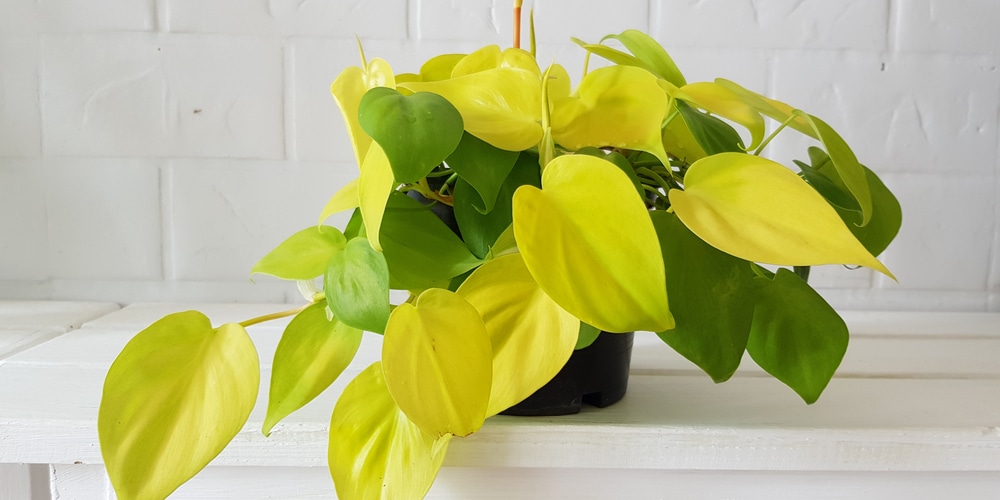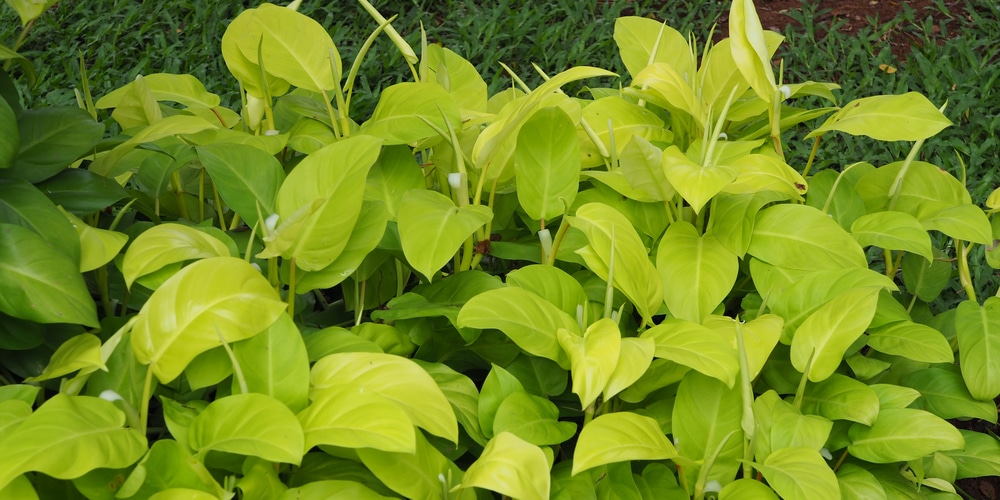Philodendron lemon lime is a lovely tropical plant that’s commonly grown as a house plant. It can also thrive outdoors in USDA zones 9 to 11. This plant goes by many names, such as the sweetheart vine, due to its heart-shaped leaves. It’s also called the heartleaf plant and is admired for its lovely lime green foliage.
Philodendron lemon-lime plants are low maintenance and can grow quite large if well cared for. A single leaf can grow to a length of up to 8 inches if grown in open spaces. The plant is a perennial, which is fast-growing and has long dangling vines. This plant belongs to the family Araceae.
What is a Philodendron Lemon Lime Plant?
The Philodendron is a beautiful tropical plant with heart-shaped leaves and long delicate vines. The leaves are an attractive lime-yellow color. Young plants have a pinkish tinge, and leaves turn neon green as they mature. Like all philodendron plants, the lemon lime Philodendron gets very tall, and it’s not uncommon for people to have these houseplants touching their ceilings.
Philodendron lemon-lime plants are toxic due to crystals of Calcium Oxalate that form on the leaves. These crystals can cause an allergic reaction in humans and animals. If touched, they can irritate the eyes and throat. The leaves cause vomiting if ingested, so they should be kept away from children and pets.
Caring for a Philodendron Lemon Lime
The Lemon lime philodendron is generally considered low maintenance and is easy to grow. With the proper care and attention, you’ll be able to grow a beautiful houseplant that’s thriving. Here are some care tips for the Philodendron lemon-lime:
Watering Requirements
In order to thrive, you’ll need to water your Lemon-lime Philodendron regularly. These plants don’t need much water but should be given small amounts often. Wait until the top layer of soil feels completely dry before watering your plant. You can water less in the winter months.
Humidity Needs
Your plant will be able to tolerate dry conditions but does like to grow in humid areas. You can mist your plant’s leaves throughout the summer or put a water tray underneath your plant. This will help keep the leaves in good condition.
Soil
When growing Lemon lime philodendron, it’s best to use well-drained soil. You can also add a layer of gravel at the bottom and mix in some perlite or peat moss. This will help your plant avoid common problems such as root rot.
Sunlight
Philodendron lemon-lime plants prefer to grow in bright indirect sunlight. However, they are also able to tolerate partial shade. Don’t leave your plant in direct sunlight as this could cause sunburn, which will make the leaves droop and turn brown.
Fertilizer
You can feed your plant with a highly diluted houseplant fertilizer in the spring and summer. Providing a light fertilizer throughout the growing season will help your plant stay healthy and increase its growth. During the winter, you can reduce fertilizer to once every two months. Don’t overfertilize your plant as the chemicals may burn the plant.
Pruning
These plants grow long dangling vines which make them nice to grow on a windowsill or shelf. When the vines get so long that they touch the floor, you may want to give your plant a trim. In ideal conditions, these vines can grow to be up to 20 feet long. Dangling vines can be cut with a sharp, clean knife or pair of scissors.
You may also like to remove some of your plant’s leaves to stop the plant from spreading. You can easily pinch the leaves to remove them. Ensure you’ve left behind enough of the plant’s leaves so that it’s able to continue photosynthesizing and stay healthy.
Conclusion
Philodendron lemon lime plants are very popular and can be grown inside and outdoors in the right conditions. They have beautiful heart-shaped leaves, which are an attractive green color. These plants are sometimes mistakenly referred to as lemon-lime pothos.
These plants are also known as sweetheart vine due to their long vines and heart leaves. The vines will need to be regularly pruned as they are fast-growing and in the right condition can reach a length of 20 feet.
When shopping for indoor houseplants, people often look at the neon pothos at the same time they look at the lemon lime philodendron. So, we created this guide to the lemon-lime philodendron vs neon pothos. You may want to check it out if the philodendron lemon-lime didn’t quite look like it was for you, but you want something similar.

